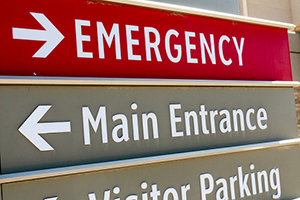Medicare patients from lower socioeconomic groups and several ethnic minority groups were more likely to be diagnosed with cancer following an emergency department visit, according to results of a study presented at the 12th American Association for Cancer Research Conference on The Science of Cancer Health Disparities in Racial/Ethnic Minorities and the Medically Underserved (Abstract 132).
Although cancer is typically diagnosed by an oncologist or a general practitioner, about 20% to 50% of global cancer diagnoses stem from an emergency department visit, explained the study’s lead author, Caroline A. Thompson, PhD, MPH, Assistant Professor of Epidemiology at San Diego State University. Some of these visits are due to emergent clinical symptoms of a cancer that was not yet identified; some are “incidental” diagnoses in which a patient seeks help for one ailment and is also found to have cancer; and some are patients who visited the emergency department because they had no usual source of care.

Photo credit: Getty
The third group highlights one source of the cancer disparities that affect underrepresented populations, Dr. Thompson said. Cancer diagnosis via the emergency department may increase time to treatment, worsen short-term survival, and reduce the quality of care. “Emergency room detection of cancer provides a window to understanding disparities in receipt of cancer screening and preventive care, since the emergency department sees a disproportionately high number of uninsured, underinsured, lower-income, and minority patients,” she explained.
Methods
To assess the prevalence of emergency department cancer detection in the United States, Dr. Thompson and colleagues studied 415,395 Medicare beneficiaries who had been diagnosed with breast, colorectal, lung, or prostate cancer between 2004 and 2013. They looked for patients who had had at least one emergency department claim in the month before the date of cancer diagnosis and defined these claims as “emergency department–mediated.”
Results
Overall, the study found that 11% of cancer diagnoses were emergency department–mediated: 5% for breast cancer, 13% for colorectal cancer, 15% for lung cancer, and 6% for prostate cancer.
Patients who went to the emergency department and received a subsequent cancer diagnosis were more likely to be unmarried (odds ratio [OR] = 1.32, 95% confidence interval [CI] = 1.29–1.34), Hispanic (OR = 1.47, 95% CI = 1.37–1.57), or black (OR = 1.41, 95% CI = 1.37–1.45), in the lowest income quartile (OR = 1.26, 95% CI = 1.21–1.30), or have three or more comorbidities (OR = 3.08, 95% CI = 3.00–3.16).
KEY POINTS
- Overall, the study found that 11% of cancer diagnoses were ED-mediated: 5% for breast cancer, 13% for colorectal, 15% for lung, and 6% for prostate.
- Patients who went to the emergency room and received a subsequent cancer diagnosis were more likely to be unmarried, Hispanic or black, in the lowest income quartile, or have three or more comorbidities.
Understanding which patients are diagnosed via an emergency department visit is important, because it can help researchers assess whether public health campaigns and primary care services are working, Dr. Thompson explained. “Someone who has a ‘screenable’ cancer detected in the emergency department has probably not been screened recently, or ever,” she noted. These patients are more likely to be diagnosed with an advanced stage of cancer and their disease may be more difficult to treat, she added.
Overall, this study highlights the importance of making screening and prevention available to all, including all racial/ethnic groups and those with a lower socioeconomic status, said Dr. Thompson said.
The authors concluded, “While some cancers diagnosed in the emergency department may indicate incidental findings, later-stage symptomatic cancers not identified until they become an emergency may reflect the failure of public health campaigns and primary care services. Reducing emergency presentation of [patients with] cancer may improve patient outcomes and health-care system efficiency. Further research is needed to uncover symptomatic and incidental pathways to diagnosis and to identify targets for interventions.”
Disclosure: This study was supported by a career development award from the National Institutes of Health National Center for Advancing Translational Sciences and the University of California, San Diego. For full disclosures of the study authors, visit aacr.org.

